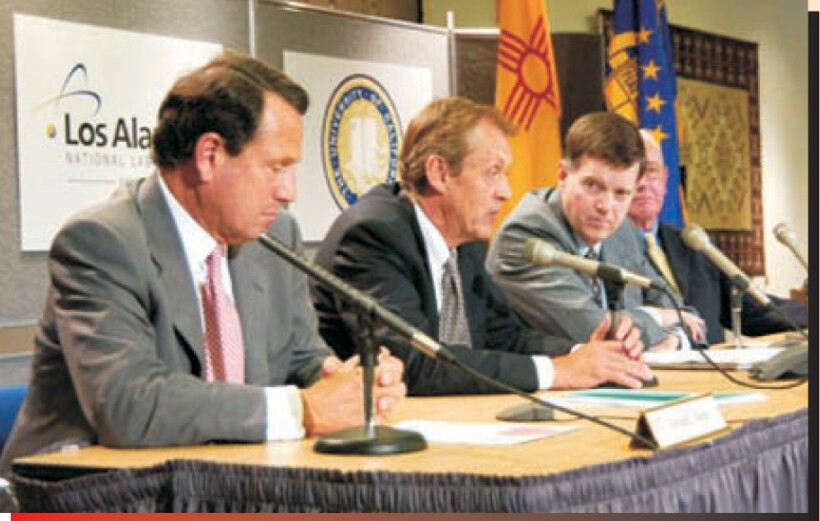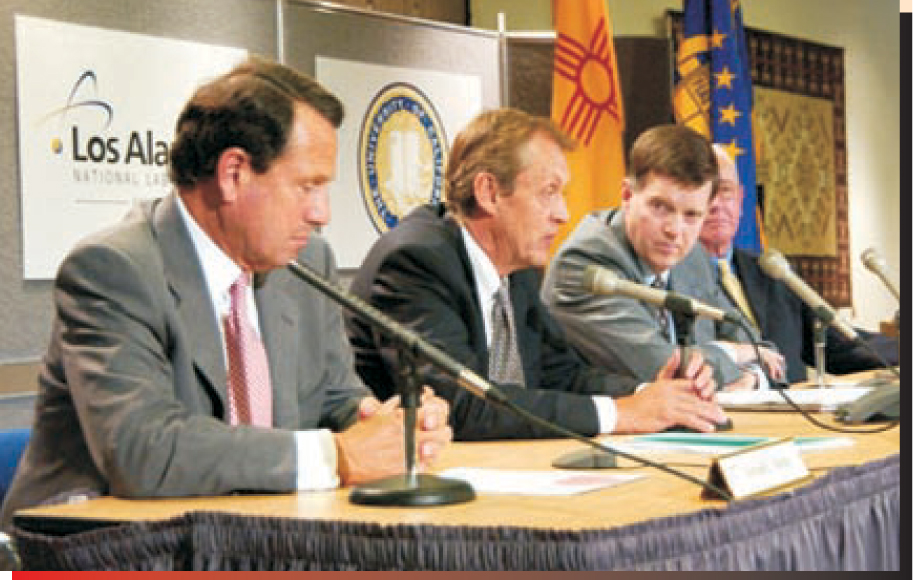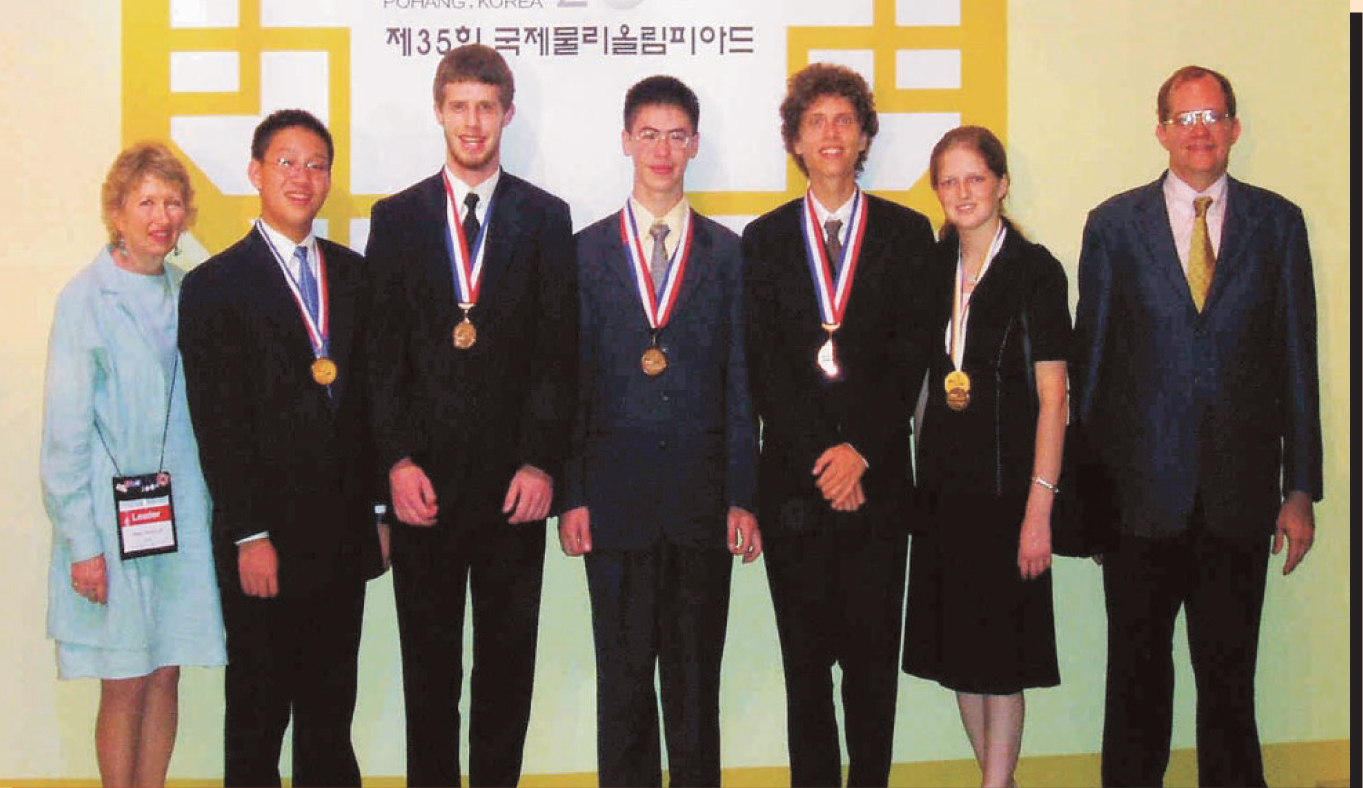Los Alamos Halts Work in Wake of Apparent Security Breach
DOI: 10.1063/1.1809088
Blaming the 7 July disappearance of two classified computer disks on a few employees flouting rules, on 15 July Los Alamos National Laboratory Director G. Peter Nanos called for a complete stand-down, or work stoppage, at the lab. “Critical missions and essential functions,” relating mostly to the lab’s stewardship of the nation’s nuclear weapons, are the only exceptions. A couple of weeks later, Energy Secretary Spencer Abraham broadened the stand-down for activities involving classified removable electronic media, or CREM, to all Department of Energy sites.
Then, in mid-August, reports circulated that the supposedly missing disks never existed. Citing an FBI investigation, the reports, which first surfaced on a New Mexico television station and which neither LANL nor the FBI would confirm at press time, said there was a mix-up in accounting for bar codes, not actual classified material.
LANL’s future is threatened, Nanos told employees in mid-July—before the existence of the disks had been thrown into question. He vowed “to hold those involved fully accountable, up to and including termination of employment, if appropriate.” Moreover, he added, “if one of the cowboys at Los Alamos who think that the rules don’t apply to them goes off and does something stupid, you can just kiss the University of California goodbye… . People in Washington just don’t understand how any group of people that purports to be so intelligent can be so inept.” UC has managed the lab since its inception 61 years ago, but later this year, for the first time, DOE will open the contract for bidding.
Twenty-three LANL employees have been suspended pending investigations—19 in connection with the supposedly missing disks and 4 in an unrelated accident in which a student’s retina was injured by a laser that had been thought to be turned off. The lab has been under intense scrutiny since the misplaced espionage charges against Wen Ho Lee five years ago.
The missing disks were not the first security breach on Nanos’s watch, which began in January 2003, but they drew swift action, says lab spokesman Kevin Roark, because the incident was seen as a willful disregard of rules, whereas previous security lapses were interpreted as unintentional. LANL began reducing its CREM a couple of years ago, and is supposed to wean itself completely over the next several years.
In late July, a step-wise stand-up began with administrative and unclassified activities. Before work with CREM resumes, Nanos said at a press conference on 4 August, “we first have to complete investigations by ourselves and other law enforcement agencies. We have to complete disciplinary actions. And we have to complete a wall-to-wall CREM inventory and validations by ourselves and the Department of Energy.” Reacting to the possibility that the disks had never existed, Senator Pete Domenici (R-NM) said in a statement on 10 August, “It may be that what we have here is a false positive—the system says something is missing when it is not. And just as if it were a medical test, it is better to find out the inventory was wrong than that the disks were actually missing. But this entire situation only reinforces that we need to improve the inventory system.” The soonest the lab will be fully up and running is October, according to Roark.
In the meantime, says Roark, “everybody is deeply involved in resumption activities.” Employees are detailing their day-to-day tasks, reviewing hazard control plans, and talking with their managers. “We are making sure that all requirements are met and that this is not a paper exercise,” Roark says. “The director was adamant about making people understand that the lab’s survival was at stake, and that there needed to be a cultural change that focuses on safety and security, and to understand that those things are not incompatible with great science.”
The mood among LANL scientists is somber, but they seem to be on board. The work stoppage and security and safety training are “a slightly bitter pill,” says Robert Reinovsky, program manager for pulsed power hydrodynamics, “but we are doing it, very seriously. And folks are basically happy to be able to give input.”
Not surprisingly, LANL’s woes are fueling speculation about the future management of the lab. Before Congress’s summer recess, Senator Wayne Allard (R-CO) introduced legislation that would terminate UC’s management contract and ban its renewal. Observers speculate that technology industries in Colorado stand to gain from an expected Texas bid to run the lab. They also point to comments by Senator Joe Barton (R-TX) as politically calculating. For example, at a hearing in July, Barton, who chairs the House Energy and Commerce Committee, said that there is “probably better security at the … public library over CDs and videos that are on the Blockbuster top 10 list.”
While the disk debacle and earlier security lapses at LANL may reflect poorly on UC, the university is taking the problems seriously, Gerald Parsky, chair of the UC board of regents, said at the August press conference. “We want to be in a position to say the mistakes of the past have been addressed.”

On the spot. (From left) University of California Regents Chair Gerald Parsky, UC President Robert Dynes, Los Alamos National Laboratory Director Pete Nanos, and UC Vice President for Laboratory Management Robert Foley take questions at an August press conference at LANL.
LANL


With their medals, the US competitors in this year’s physics olympiad, flanked by coaches Mary Mogge (California Polytechnic University) and Robert Shurtz (Hawken School in Gates Mills, Ohio), were (from left) Yi Sun, Eric Mecklenburg, Anson Hook, Jeffrey Middleton, and Elena Udovina.
MARY MOGGE

More about the Authors
Toni Feder. American Center for Physics, One Physics Ellipse, College Park, Maryland 20740-3842, US . tfeder@aip.org
